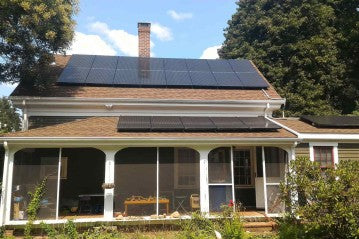
When it comes to setting up a solar panel system, selecting the appropriate charge controller is crucial for efficient energy management. In this blog post, we will delve into the considerations for choosing the right solar charge controller size for an 800W solar panel system. We will explore the calculations involved, understand the role of the charge controller, and highlight the importance of compatibility with your specific system requirements.
How to Size a Charge Controller?
Before diving into the specifics of an 800W solar panel system, it's essential to grasp the significance of sizing a charge controller accurately. The charge controller acts as the interface between the solar panels and the battery, regulating the flow of electricity and preventing overcharging or discharging. Proper sizing ensures optimal performance and longevity of the system.
Solar Charge Controller Size Calculation
To determine the ideal charge controller size for your 800W solar panel system, you must consider various factors. Firstly, the number of solar panels plays a significant role. If you have multiple panels connected in parallel, the total wattage of the system increases, requiring a higher capacity charge controller. Additionally, the battery system voltage is crucial, as it influences the charging current and determines the compatibility of the charge controller.
Understanding an 800W Solar Panel
An 800W solar panel refers to its power output under specific conditions. It is a measure of the panel's ability to convert sunlight into usable electricity. These panels are typically composed of photovoltaic cells that generate direct current (DC) electricity when exposed to sunlight. Understanding the capacity of your solar panel is essential for selecting the right charge controller.
Amp Output of an 800W Solar Panel
To determine the amperage produced by an 800W solar panel, you need to consider the system's voltage. Dividing the wattage (800W) by the voltage will provide you with the amperage. For instance, if your system operates at 24V, the amperage would be approximately 33.33A. Matching the charge controller's amperage capacity to the panel's output is crucial to ensure efficient energy management.
Determining the Appropriate Charge Controller Size
For an 800W solar panel system, the recommended charge controller size typically falls within the range of 60A to 100A. However, it's important to consider your specific battery system voltage. If you are using a 24V battery system, a charge controller with a capacity of 60A is suitable. This ensures that the charge controller can handle the current generated by the panels without being overwhelmed.
ECGSOLAX offers quality 60A-100A solar controller, you can click here to learn more about our products.
Conclusion
Selecting the right charge controller size is vital for the smooth operation and longevity of your 800W solar panel system. By properly sizing the charge controller, you can prevent overcharging or discharging of the battery, maximize energy efficiency, and protect your investment. Remember to consider the number of solar panels, the battery system voltage, and ensure compatibility with the panel's output. Taking these factors into account will allow you to make an informed decision and optimize the performance of your solar panel system.
Incorporating a well-sized charge controller into your 800W solar panel system ensures the efficient conversion and utilization of solar energy. At [Your Company Name], we understand the importance of a reliable charge controller and offer a range of options to suit your specific needs. Contact us today to explore the best charge controller solutions for your solar panel system and take a step towards sustainable energy independence.

0 Kommentare